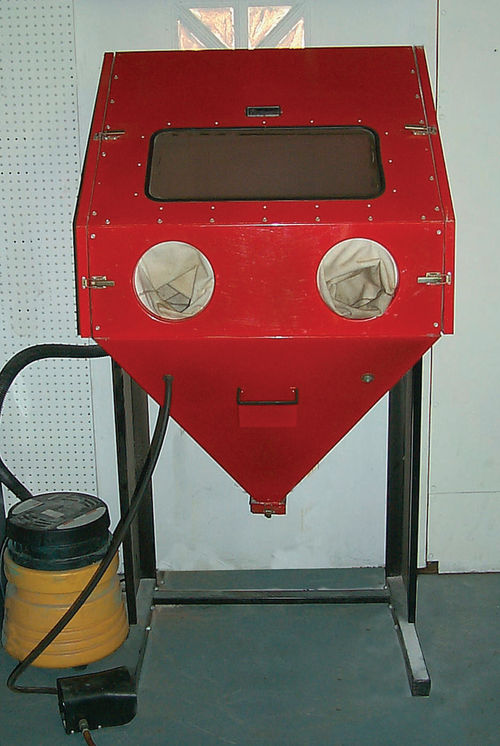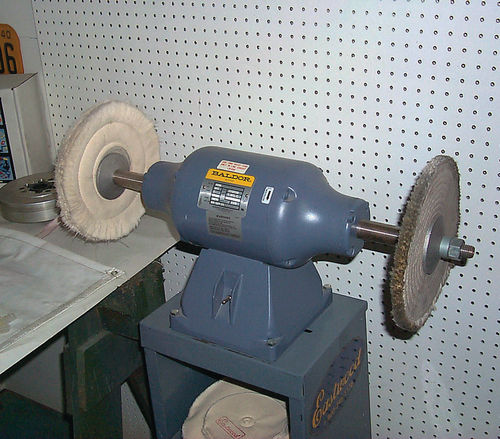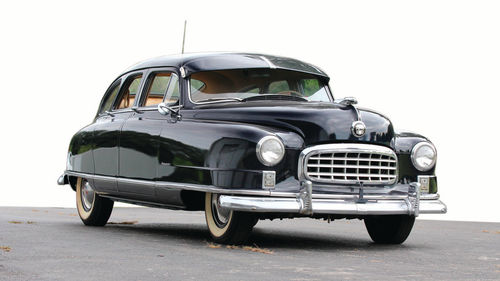Tips for launching a restoration project
Question:
I just inherited my grandfather’s 1949 Nash Ambassador and I want to restore it as a tribute to him. It is straight and all there, but it is pretty tired and tatty.
I have always looked after my own cars, but have never tried to restore one before. What do I need to get started in the way of tools and a place to work?
Answer:
To begin with, a two-car garage that you can dedicate to your project for some months—even years, is a must. Don’t even consider doing the job in your driveway, although there are tasks that can and should be performed outdoors, such as restoring the gas tank.



You need at least a two-car garage because you must store your car’s many parts in an orderly fashion, and you need to protect them from the elements. You will also need to protect your tools and equipment from theft, and you will accumulate quite a few.
Start your planning by making a list of the tools you already have, and then list what you are going to need to get started. Also, check with local rental yards to see which tools, such as cherry picker hoists and drum pullers are available from them. There is no need to buy and store such big, heavy tools if you are only going to use them occasionally.
There are basic hand tools that you can’t do without, such as a couple of good socket sets with 1 ⁄4” and 1 ⁄2” drives, a set of combination wrenches, a propane torch (for freeing rusted bolts) a vise, and a creeper. You can pick up more specialized tools such as a torque wrenches and electrical pliers as you need them.
You will need a good toolbox too. Don’t skimp here. A steel rollaway toolbox with sturdy drawers is a must. Some of them come with a smaller hand-carried toolbox on top, and they are nice too, so you take tools with you so you won’t have to run back and forth to get what you need. A sturdy stool is also important for working on brakes and wheel bearings.
Beyond the basics there are tools that make restoration so much easier that you will want to purchase them as soon as you are able. The power tools that can make a major difference are a MIG welder, or at least a stick welder, an HVLP painting rig, a media blasting cabinet, a high-speed grinder/buffer, an air compressor and a parts washing bin. Money spent on these items will save you money and hours in the long run, and make the results of your efforts much more professional.
Good lighting will make your life a lot easier too. Pick up half a dozen of those inexpensive florescent light fixtures you see at the home improvement stores and install them. Light is especially important for painting, and it will make assembly and disassembly easier too.
And if you are going to work in your garage and it has a water heater with a pilot light in it, consider moving it outdoors. You will be messing with a number of volatile liquids including gasoline when you restore your car’s fuel system—and a pilot light can cause fumes to flash with disastrous results. I also use an old non-functioning metal refrigerator in which to store paints and solvents. It is a sealed container, fire resistant, and has shelving, making it an ideal paint locker.
A heavy-duty fire extinguisher is a must too. A large fan exhausting to the outside, and plenty of ventilation are also important if you will be working with the doors closed in the winter. And don’t forget a good hydraulic jack and jack stands. Never work on a car while it is resting on a jack. Doing so can be a deadly mistake.

You will also need a respirator with fresh charcoal filters for painting even with aerosol cans, and heavy cotton or leather work gloves for grinding, buffing and welding. Safety glasses are a must too, as is a first aid kit. Beating up your knuckles is just part of our hobby. You also need a cell phone with you when you work on your car alone too.
You will want to build or buy plenty of shelving too. Cheap metal shelves from DYI stores are fine, provided you secure them to the walls. You will also want a cheap digital camera, or you can use your phone to take pictures of things before you take them apart. Also, plenty of plastic Ziploc bags for small items are important. You can label them with a magic marker before shelving them.
A large, sturdy workbench with a vise is also a must. Buy or build a bench high enough so you don’t have to bend over to work at it. You’ll be putting in many hours on items such as brake cylinders, carburetors, fuel pumps and steering units, and you will want to be able to lay them out in order.
A compressor is also nearly a necessity, though you won’t need one to get started. A large one is no longer required for shooting paint because the new HVLP spray units don’t need a source of compressed air, but you will need at least a twohorsepower compressor (5 would be better) that puts out 7 cubic feet per minute of air at 80 PSI (100 is optimum) for your blasting cabinet.
Buy the biggest compressor you can afford. It will pay for itself many times over. Also, get a compressor with the biggest tank you can manage. The more air you can store the better, because with a small tank your compressor will run all the time. Also, if you can swing it, go for a two-stage compressor. Single-stage compressors have to work much harder to do the job.
A huge amount of time can be saved during your restoration if you have a media blasting cabinet. One of the most time-consuming and nasty aspects of restoring old cars is getting old paint and rust off of everything. Wire wheels chucked into household drills, plus sanders and various types of strippers and de-rusting chemicals can do the job, but they take a lot more time. A blast cabinet makes short work of paint removal and de-rusting.
Blast cabinets are available by mail order, and can be assembled in a couple of hours. I prefer the types that load from the sides and have big doors to accommodate larger items. Garnet and aluminum oxide are great for most types of work, and walnut shells are good for cleaning engine internals because they leave no damaging abrasive dust.
A MIG (Metal Inert Gas) welding unit has made it possible for the home hobbyist—with a little practice—to patch rusty panels and fix fractured frame members. And it is a rare classic indeed that does not have rust problems. MIG welding works so well because it uses an inert shielding gas that cools the surrounding metal to prevent warping.
You won’t need all of these things at once. You can start with the hand tools and less expensive items, then buy the bigger ones as you require them. I collect tool catalogs too. That special tool that makes a difficult task easier is usually just a phone call away if you know who to call. And if you are computer savvy, you can order specialized tools over the Internet and have them shipped the next day if necessary.
















